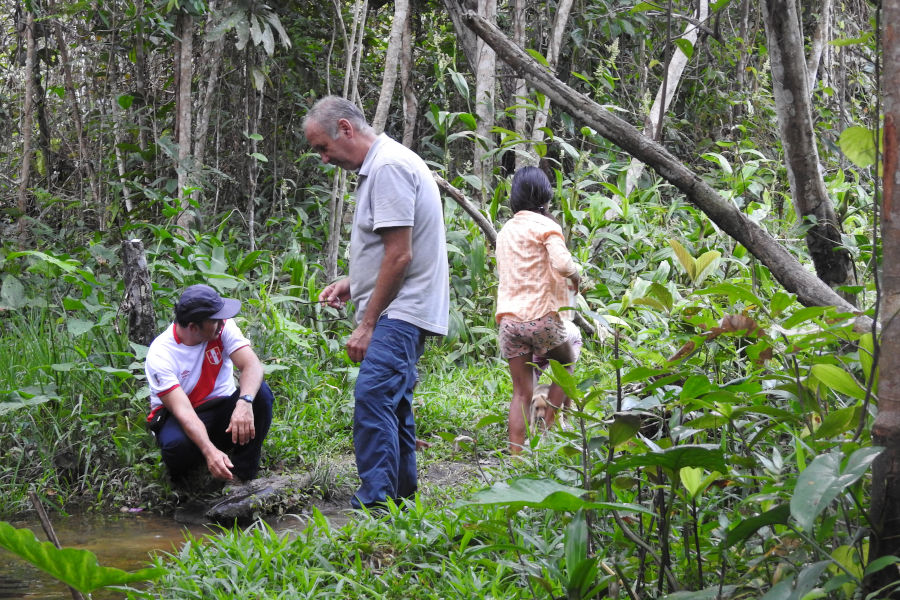Biodiversity, the last frontier
Jordi Serra-Cobo, lecturer at the Faculty of Biology and the Biodiversity Research Institute (IRBio) of the UB, is an expert in eco-epidemiological studies. He stands out for his studies on bats as natural reservoirs of infectious agents such as coronaviruses. On the occasion of the International Day for Biological Biodiversity on May 22, with the motto “We are part of the solution”, Serra-Cobo reminds us that breaking the frontiers of biodiversity involves an incalculable risk for humanity.
A complex conjunction of biological, epidemiologic and social factors has facilitated the global spread of SARS-CoV-2 worldwide. But this has not been the only epidemiological crisis caused by the coronaviruses in the 21st century. In 2003 and 2021, SARS and MERS emerged already, and the health crises they caused warned us about what could happen. In an article published in the journal Frontiers in Microbiology, Jordi Serra-Cobo warns us about the spots in the planet where the destruction of biodiversity could cause future pandemics. Rapid and forced changes in the natural world can endanger global health and regarding these, it is necessary to reflect in order to put limits on human exploitation activities in an ecologically hyperconnected and finite world.
Regarding the emergence of an epidemic or a pandemic due to coronavirus, is it an extraordinary phenomenon or is it more likely to happen than what we might think?
Coronaviruses are present in animal species in all the world. Therefore, theoretically, epidemics could still appear in any part of the planet. However, the epidemiological history of SARS, COVID-19 and MERS shows this is not the case: epidemic outbreaks tend to occur in areas with a high biodiversity and deep environmental alterations, what we call hot spots.
In order for an epidemic to take place, several essential factors are necessary: the circulation of the virus in nature, the ability of the virus to recognize the receptors of human cells and to be compatible with them, contact between viruses and humans, the spread of contagion through people’s transmission and the spread of the virus. Coronaviruses are presents in bats worldwide. However, the presence of coronaviruses in bats is not enough to unchain an epidemic in human population. This takes us to the idea that we need intermediary hosts so that the transfer of coronavirus from bats to people takes place.
We are talking about a zoonotic emergency, and this involves not only bats, wildlife and natural systems but also several anthropogenic and social aspects. Zoonotic emergencies are very rare, they cause little infection in humans in tend to disappear without causing epidemics or pandemics. The social environment in humans is determining in the emergence of transmissible diseases. Biological compatibility is not enough to cause an epidemic.
The coronaviruses and other viruses are organized in metapopulations and parasite other living organisms that are distributed in metapopulations. The populational features explain the great diversity of viral populations —and genotypes— in the wild fauna. An epidemic is only one possibility out of many: a certain virus population —among many genetically-related populations— that is casually exposed to an only conjunction of biological and social events.

Is the protection of biodiversity the best vaccine against future epidemics?
The deforestation of tropical areas has contributed to humans’ exposure to new viruses and the spread of known viruses. When tropical forests are destroyed, many animals leave the area and look for new ones, and other remain in their original habitat. Those species that live now in the deforested area will look for food and shelter in farms, houses, etc. The contact will stop being anecdotic if some of the species is a reservoir of zoonotic viruses and ends up infecting the inhabitants of the area, the cattle or the domestic animals. Preserving the biodiversity is a tool to protect us from the emergence of diseases.
Apart from the Southeast Asia, the central and southern parts of the American continent are favourable regions for the emergence or infectious diseases, specially the Amazon rainforest. Massive deforestation, conversion of land for agriculture, mining and the creation of roads increase the risk of new diseases appearing in this American region. Central Africa, with a large biodiversity and important environmental changes, is another world region at risk of having new epidemics. The anthropization of the natural environment causes changes that can transform regions —coronavirus-free initially— into new hot spots. Sarbecoviruses —a subgenera of the coronaviruses— can turn into a future threat in an extremely connected world.
What should we list in a roadmap for the future?
We should consider that rapid and massive changes we produce in natural systems can have consequences regarding human health. We must learn there are limits in our activities in an ecologically connected and finite world. It is important to change the strategy, to dedicate more efforts to prevention and not wait for a reaction when we have the problem. Climate change will facilitate the spread of infectious diseases and the circulation of new pathogens currently confined in the permafrost.
It is necessary to take more precaution in the exchange of goods that can transport disease vectors (mosquitoes, ticks) or plague species (Asian wasp, box tree moth, etc.). the tourist sector should learn the lesson from the COVID-19 pandemic and take preventive measures. And especially, we have to prepare the cities to cope with future epidemics with rapid prevention, detection and action protocols.
